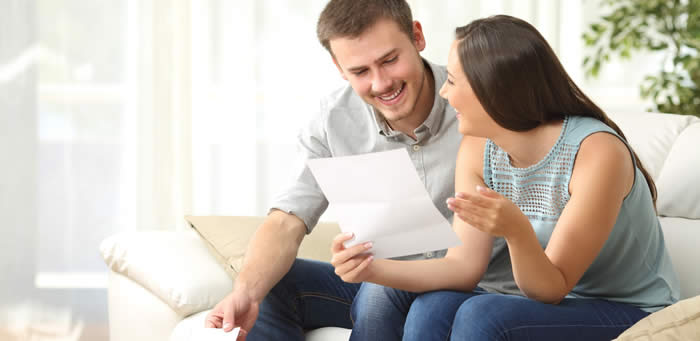What is Marriage Tax Allowance?
Last updated on 7 August 2025

The Marriage Allowance is a tax incentive put in place by the Government that can be helpful for married or civil partnered couples, particularly if one partner or spouse is a lower earner.
Depending on income, it’s possible for households to reduce their tax by up to £252 per year.
How does Marriage Tax Allowance work?
The current Personal Allowance (tax year 2025/26) is £12,570. This is the amount you can earn before paying income tax. If you earn any more than that, income tax is collected on the remainder of your salary.
The Marriage Tax Allowance lets you claim £1,260 of your partner’s Tax-Free Allowance, providing you meet the particular criteria.
Am I eligible for the Marriage Tax Allowance?
You should be eligible for Marriage Tax Allowance if you meet the following criteria:
- You’re married or in a civil partnership.
- One of you earns less than the personal allowance.
- One of you pays Income Tax at the basic rate
In England, Wales and Northern Ireland, this means your partner will need an income between £12,571 and £50,270. In Scotland, they will need to pay either the starter, basic or intermediate rate. This will generally mean an income between £12,571 and £43,662.
Self-employed people can also enjoy these tax benefits of marriage, so long as they meet all the other above criteria.
You can also claim Marriage Tax Allowance if your partner died on or after April 1, 2015.
If you’re still unsure if you qualify, use the HMRC Marriage Allowance Calculator.
How much is the Marriage Allowance Transfer worth?
Currently, the Marriage Tax Allowance could reduce your tax bill by up to £252. If you remain eligible, you'll automatically receive this benefit each following year.
Additionally, you may be able to claim for up to four previous tax years if you met the eligibility criteria during those periods.
How is the Married Tax Allowance paid?
The method for receiving your benefit depends on whether you're claiming for the current tax year or backdating it:
Current tax year
The higher-earning partner's tax code will automatically change to the new marriage allowance tax code. This will result in slightly less income tax being deducted from each paycheck. The lower-earning partner - if they’re still employed - will also receive a new tax code.
Changes to your tax code can take up to 2 months to process. The exact timing of when you'll notice the difference in your take-home pay depends on your employer's payroll cycle.
If you're self-employed, your tax bill is calculated via your Self Assessment. It will be automatically reduced to reflect the Marriage Tax Allowance.
Should my partner or I apply for Marriage Tax Allowance?
The lower earner will need to apply for Marriage Tax Allowance, which can be done online.To apply, you’ll need:
- Your National Insurance number and your partner’s
- Two forms of acceptable ID for the non-taxpayer
If you’re the applicant and the application is successful, then HMRC will set your partner up by either their self-assessment tax return or adjusting their tax code.
Can I cancel my Marriage Tax Allowance?
Yes, you can by contacting HMRC.
What is the difference between the Marriage Tax Allowance and Married Couple’s Allowance?
The Marriage Allowance is a tax incentive that allows the lower income partner to transfer £1,260 of their personal tax allowance to their civil partner or spouse.
The Marriage Couples Allowance is available for couples where one or both spouses are born before 6th April 1935. It provides a tax credit which can vary depending on marriage date and earnings. Further information can be found here
Related Articles